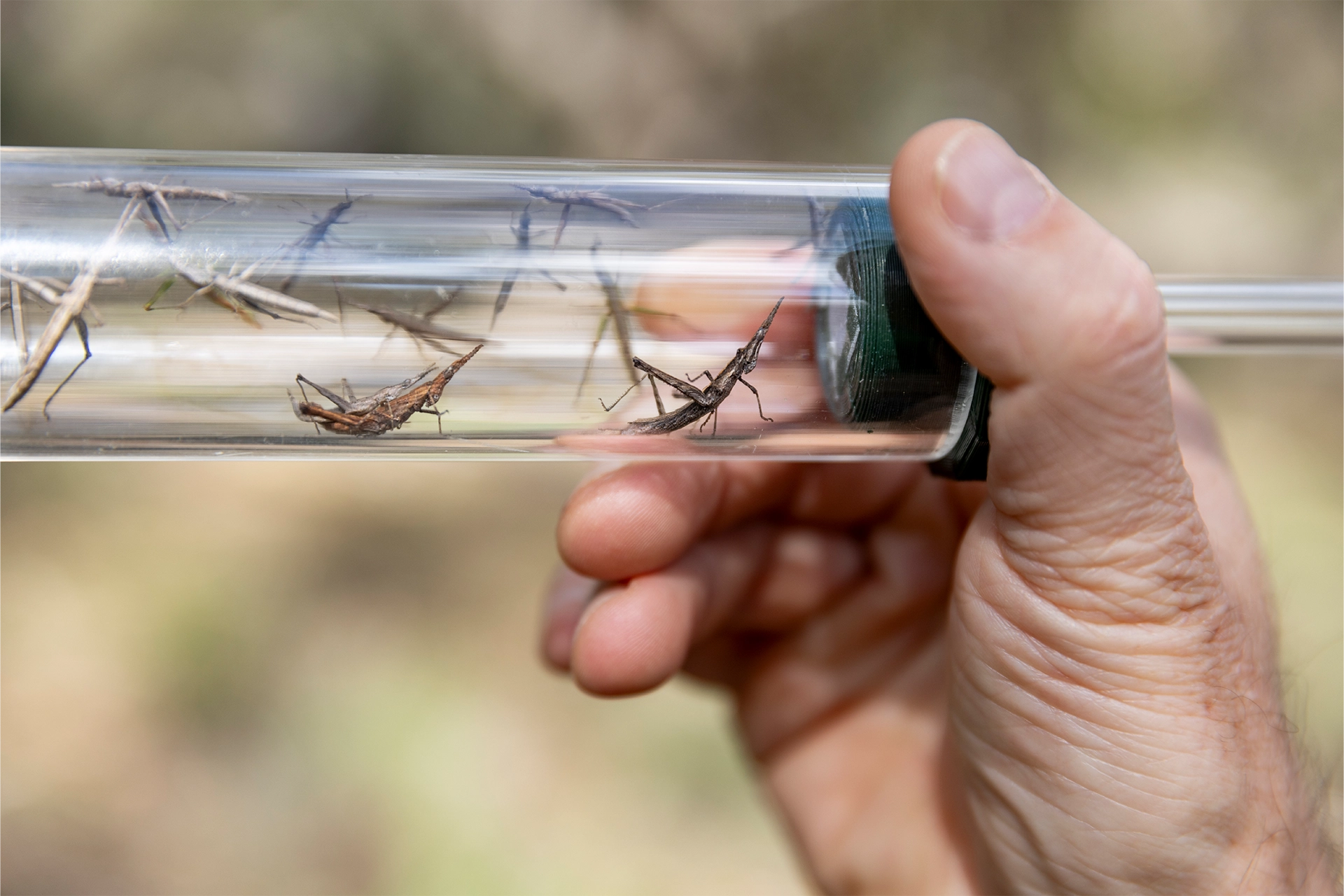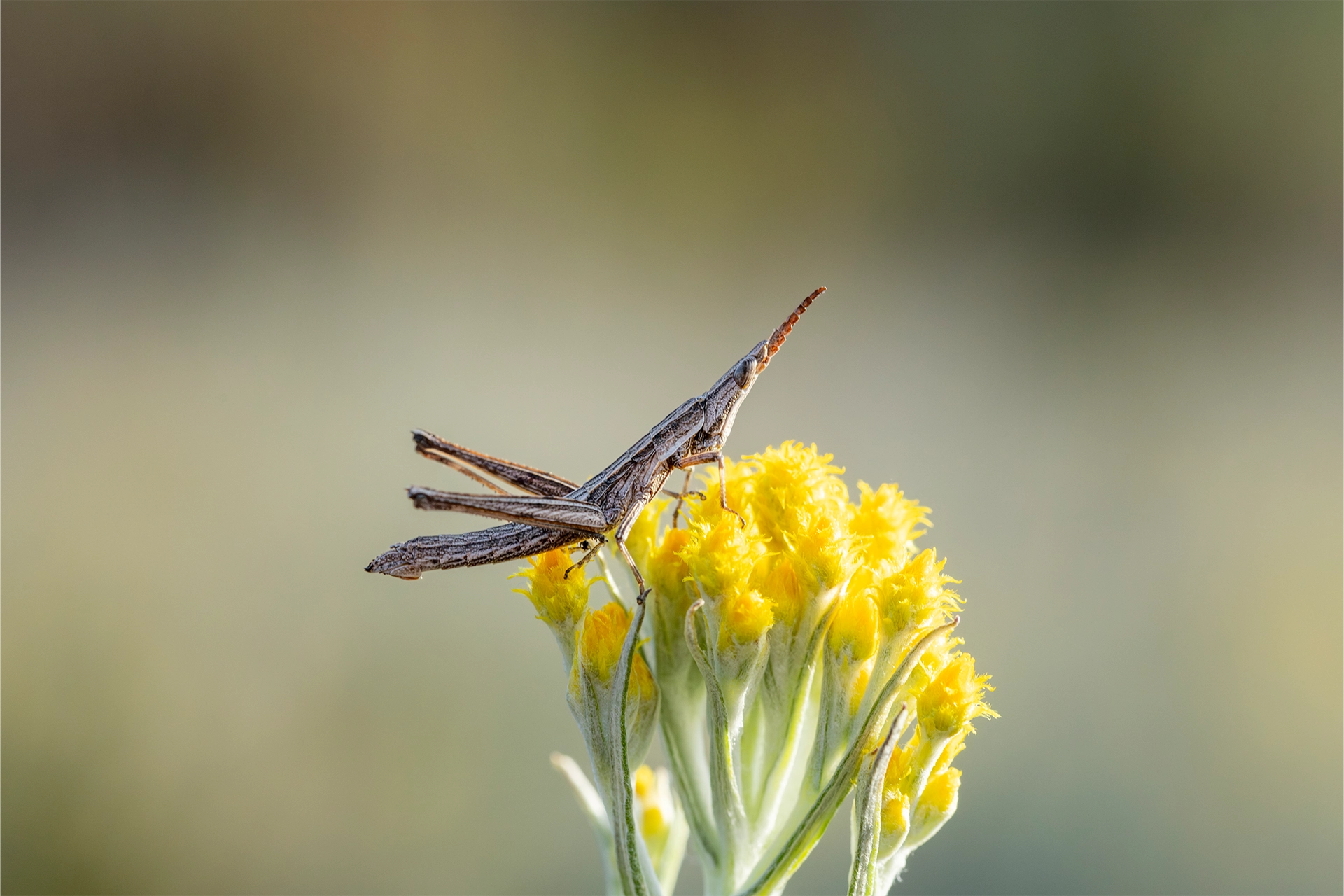
Sciences & Technology
The grasshopper that was lost, then found, is now endangered

Translocation is helping protect the endangered Key’s Matchstick Grasshopper and enhancing ecosystems in south-eastern Australia
Published 24 September 2024
The Euroa Arboretum on Taungurung Country in northern Victoria is a conservation centre that is home to many rare and important plant species.
And now its residents include a group of small grasshoppers that were thought to be extinct in Victoria until their rediscovery in 2018.

But these Key’s Matchstick Grasshoppers didn’t find their own way to the idyllic native daisy and tussock grasslands of the ‘Arb’ – after all, they can’t fly and might only move a few tens of metres in their lifetime.
Instead, a group of scientists and conservationists from the University of Melbourne and Zoos Victoria helped an isolated population travel 60 kilometres to their new home.
We asked University of Melbourne ecologist Professor Michael Kearney how ‘translocations’ work and why we should care about the future of these little guys.

Sciences & Technology
The grasshopper that was lost, then found, is now endangered
It’s from the family Morabidae, a group of around 245 species only found in Australia and all of which are wingless. They are colloquially known as ‘matchstick grasshoppers’ because they look like matchsticks with legs.
The Key’s Matchstick Grasshopper was once widespread and abundant in New South Wales, the Australian Capital Territory and north-eastern Victoria. However, populations have drastically reduced due to habitat destruction since European colonisation.
The species is clinging on in remnant patches of grasslands as small as 0.15 hectares, the size of a couple of suburban house blocks.
If you find them naturally occurring somewhere it is a good sign that the habitat is of high quality. They can teach us things about ecology and evolution and they are an important part of our natural food webs.
1 / 6
A translocation is simply the movement of organisms from one site to another.
Species tend to naturally migrate to other suitable habitats, but for many species, suitable habitat may be inaccessible because of barriers to movement, particularly in habitats that have been fragmented by human activity.
This is especially true for species with limited movement like wingless insects.
We can also introduce species to new habitats through captive breeding programs, but translocation is much faster and keeps the populations completely wild.
These grasshoppers are endangered so every individual is important.
To safely collect them we use a ‘pooter’ (technically called an aspirator).
This is basically a container with two tubes – we point one tube at the insect and quickly suck (or ‘poot’) on the other tube to draw it into the container.
It’s a way of capturing small insects without damaging or harming them – it makes it easier to catch them when they are in complex vegetation and you can’t simply swing a butterfly net around.
And don’t worry, the mouth tube has a filter so we don’t accidentally swallow one of these precious grasshoppers.
We then move the grasshoppers as quickly as we can, on the same day if possible, and release them directly into their new habitat.
The Key’s Matchstick Grasshopper can be quite common in suitable habitat and are prey for other invertebrates like spiders, as well as vertebrates like lizards and birds.
They live in near-adult form throughout the winter and are a good source of food for birds and lizards in the winter and early spring, when most other insects are yet to hatch.
By returning these over-wintering grasshoppers to suitable habitats we not only help them, but we also enrich food webs.
Michael Kearney and Jessie Sinclair releasing grasshoppers at the Arb. Picture: Zoos Victoria / Jo Howell
Working with Zoos Victoria, we will monitor this translocation along with all known remnant populations of Key’s Matchstick Grasshoppers.
We will also continue our translocation program focusing on other at-risk populations of the species, including the Beechworth Cemetery.
We are also working on an as yet undescribed species that is very closely related and survives in little fragments of western and north-western Victoria.
The Key’s Matchstick Grasshopper translocation project is led by Professor Ary Hoffmann, Professor Michael Kearney and PhD candidate Hiromi Yagui at the University of Melbourne in collaboration with the Wildlife Conservation and Science team at Zoos Victoria.
